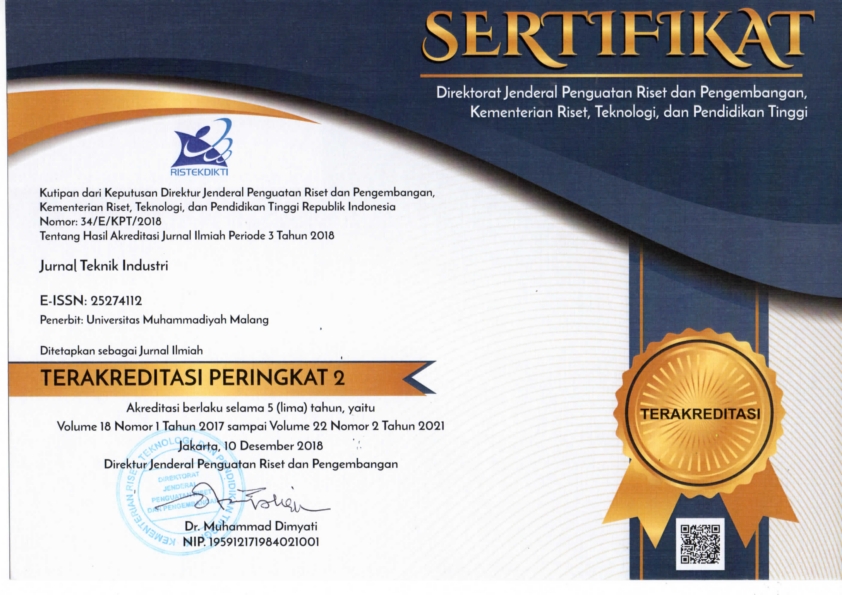Pemilihan Strategi Pemasaran Dengan Metode SWOT Dan TOPSIS
DOI:
https://doi.org/10.22219/JTIUMM.Vol18.No1.55-67Keywords:
Marketing Strategic, SWOT, TOPSISAbstract
Marketing is an important activity of the company. The main purpose of company marketing is to increase profit. CV X is a trading company. The company’s problem is the stable product sales. Companies must determine the right marketing strategy. This study uses SWOT analysis to identify factors and formulate appropriate marketing strategies. The TOPSIS method is used to rank alternative marketing strategies. TOPSIS ranking show best and ideal strategy. Based on SWOT analysis are four marketing strategies alternative. the first priority marketing strategy is to expand the product marketing distribution network with a preference value of 0.497962. The second priority marketing strategy is to focus on one of the NPK variants with a preference value of 0.488088. The priority marketing strategy of three is to improve the quality service with a preference value of 0.465217. And four priority marketing strategy is the use of marketing strategy with the value of preference 0.462249.Downloads
References
F. Rangkuti, Analisis SWOT Teknik Membedah Kasus Bisnis. Jakatra: Gramedia Pustaka Utama, 2003.
P. Kotler, Manajemen Pemasaran. Jakarta: Erlangga, 2002.
A. Arvianto, D. P. Sari, and G. Olivia, "Pemilihan Strategi Pemasaran Pada PT. Nyonya Meneer Dengan Menggunakan Pendekatan Metode Analytical Network Process (ANP) dan Technique for Order Preference By Similarity to an Ideal Solution (TOPSIS)," J@ Ti Undip: Jurnal Teknik Industri, vol. 9, pp. 35-44, 2014.
S. Opricovic and G.-H. Tzeng, "Compromise solution by MCDM methods: A comparative analysis of VIKOR and TOPSIS," European journal of operational research, vol. 156, pp. 445-455, 2004.
F. R. David, Manajemen Strategi Konsep. Jakarta: PT. Prehalindo, 2002.
R. Lupiyoadi, Manajemen Pemasaran Jasa. Jakarta: Salemba Empat, 2001.
P. Kotler and G. Amstrong, Prinsip - Prinsip Pemasaran. Jakarta: Erlangga, 2001.
M. E. Porter, Competitive Advantage. Tangerang: Karisma Publishing Group, 2008.
S. Kusumadewi, S. Hartati, A. Harjoko, and R. Wardoyo, Fuzzy Multi











